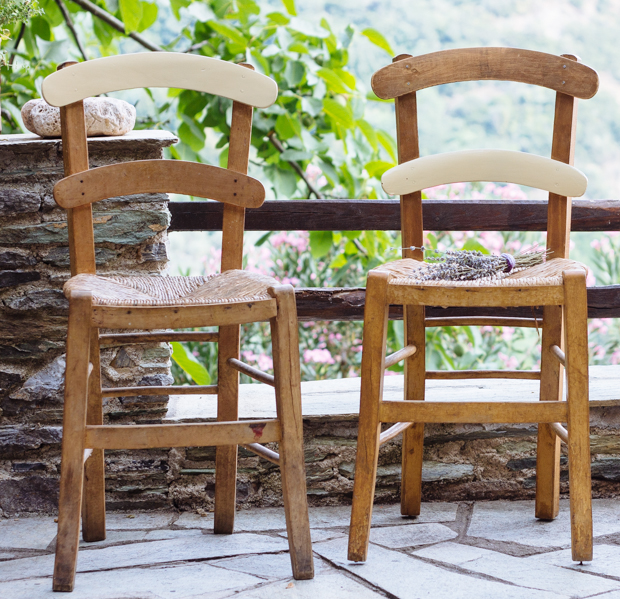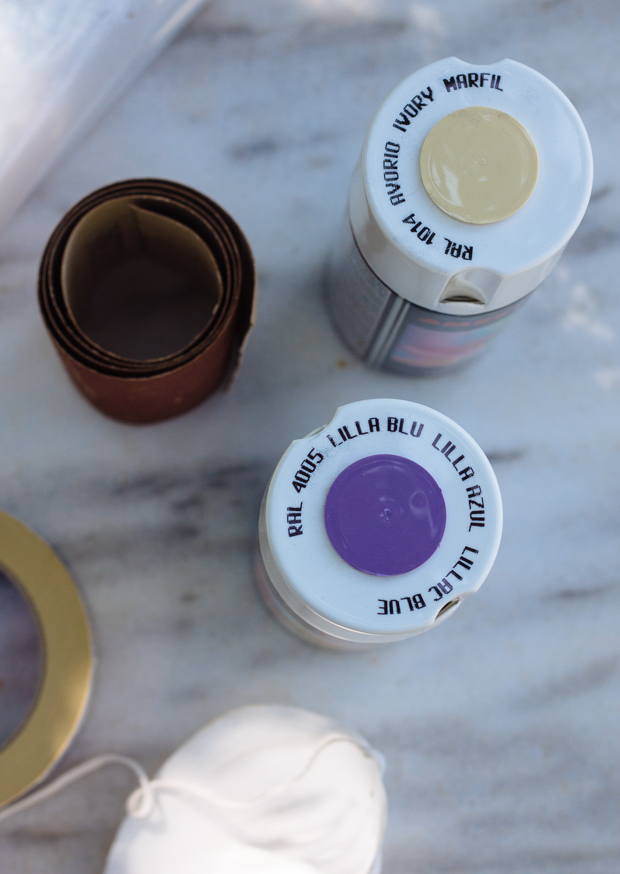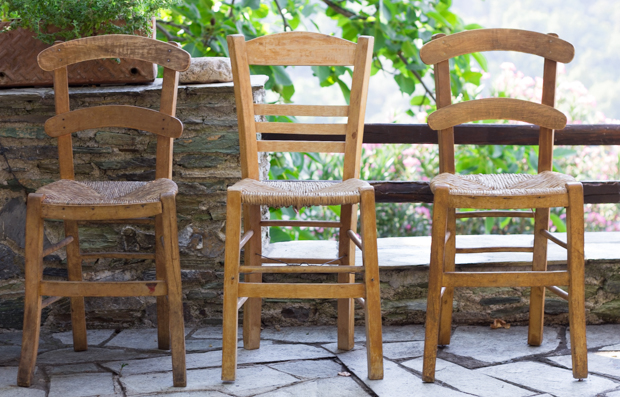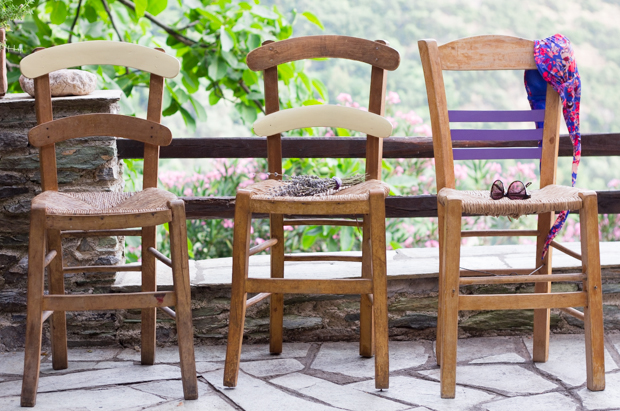
I know painting chairs has very little to do with cooking, or eating; for about a year now, I’ve been enthusiastically posting about ingredients, dishes and all things food-related, only pausing every once in a while to write a few words that are still indirectly related to all of the above.

This time, this post, is different. But not surprisingly so. See, I love little DIY projects; when I was in college, I was always spending time here and there on various attempts, some successful and pretty, and some not at all. I had time, I was constantly feeling super creative and I always had the help and support of my sister, the DIY queen of the house. Alkyoni’s taught me most of the things I know about DIY, the most important of which are patience and how to properly pronounce DIY (I use to refer to it as DUI and she had to explain the difference).

I’ve spend much of this month at my family’s summer house; apart from everything else that this house is, it’s also a paradise for such attempts. There’s tons of space, tons of things to play with and tons of tools. There’s also my father, who shares with my sister a common love for working on different projects and an ability to use their hands very successfully. Inspired by those two, our house, the ample time I had on my hands and three of my late grandma’s beautiful old school chairs, I attempted my first DIY in quite a while. It was super easy and quick, nothing groundbreaking, but all in all a good start for a rusty slob like myself. And hey, you can use these pretty pimped up chairs for dining! How about that- not so irrelevant after all…

You’ll need:
chairs to paint
cans of spray paint (I used two different colours, but feel free to go with one, three or a combination for each chair)
sandpaper
a protective mask & plastic gloves
masking tape
plastic, to cover the chairs
First, have a look at your chairs and decide which parts you’ll be painting. I went for a quite discreet look, but you can add as much colour as you like.
Carefully cover the top parts of the chair you won’t be painting with masking tape and the bottom with plastic, to prevent paint from splashing.
Get your sandpaper and start working on the areas you’ll be painting. Remove any previous coats of colour or varnish, working slowly but steadily. You want to leave the surface smooth and even.
Put on your mask and gloves, get your spray paint and following the instructions on the can, start painting. Work from a distance so the paint doesn’t drip and make sure to cover every surface you intend to paint.
Let them dry, preferably outside, and then repeat the process once again. Let them dry once last time and then carefully remove the plastic around the bottom and the masking tape.